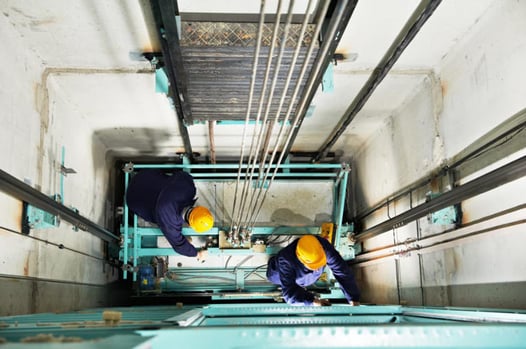Exploring the Comprehensive Actions Needed for Lift Upkeep
In the realm of building maintenance, ensuring the correct functioning and security of lifts is paramount. By dealing with crucial aspects such as positive upkeep schedules, safety checks, and emergency readiness, a thorough understanding of the complexities included in lift upkeep can lead to enhanced effectiveness and safety and security.
Normal Inspections
When it concerns making sure the long life and safety and security of your lift system, normal assessments are critical. These routine checks play a critical role in determining any potential problems prior to they rise into significant troubles, making certain the smooth and secure operation of the lift. By conducting regular evaluations, upkeep groups can proactively deal with wear and tear, defective parts, or any various other issues that may endanger the lift's efficiency or safety.
During these inspections, educated specialists completely take a look at different aspects of the lift system, consisting of mechanical components, electrical systems, safety and security functions, and general structural integrity (lift maintenance). They search for signs of wear, corrosion, leakages, or any abnormalities that might indicate a problem. In addition, they confirm that all safety devices are working correctly and in conformity with guidelines. By discovering and addressing concerns at an early stage, these inspections aid stop costly repair services, downtime, or security hazards, inevitably extending the life-span of the lift system and making sure the well-being of its individuals.
Positive Upkeep Schedules
Carrying out aggressive upkeep routines is necessary for making best use of the efficiency and long life of lift systems. By sticking to a positive maintenance method, lift owners can address possible concerns before they escalate into major problems, ultimately minimizing downtime and expensive repair work.
A well-structured positive upkeep schedule should lay out details jobs, regularities, and accountable employees. When producing these schedules to make certain the lift operates securely and effectively, it is essential to adhere to producer recommendations and market requirements. In addition, documenting upkeep activities and maintaining comprehensive documents can offer valuable insights into the lift's efficiency over time, assisting in identifying fads and making informed maintenance choices.

Security Compliance Checks
Making sure security compliance with comprehensive checks is extremely important in preserving lift systems' integrity and protecting customer wellness. Safety and security compliance checks include a comprehensive examination of numerous components, consisting of electric systems, mechanical parts, emergency situation brakes, doors, and other critical safety and security features. These checks are important to identify any type of possible hazards or malfunctions that might jeopardize the lift's procedure and put customers in jeopardy.
Routine safety and security conformity checks need to be carried out by certified technicians in adherence to industry guidelines and criteria. These checks aid in spotting problems at an early stage, permitting prompt fixings and preventative maintenance procedures to be implemented. Keeping in-depth records of safety and security compliance checks is essential for tracking the lift system's efficiency over time and demonstrating compliance with safety regulations.
Equipment Upgrades and Modernization
Enhancing lift systems through devices upgrades and innovation is crucial for enhancing efficiency and safety requirements in upright transport. As innovation developments, older lift systems may become out-of-date, resulting in decreased integrity and possible security dangers. By buying devices upgrades and modernization, structure owners can make certain that their lifts satisfy existing sector standards and guidelines.

Along with operational advantages, tools upgrades and modernization jobs can also improve the aesthetics of the lift, supplying an extra appealing and contemporary experience for travelers. Inevitably, purchasing lift upgrades and modernization is a positive strategy towards making sure the long life, safety, and performance of vertical transport systems.
Emergency Situation Preparedness Planning
An efficient emergency situation readiness strategy is essential for guaranteeing the safety and security and speedy response in case of unforeseen cases involving lift systems. Emergency preparedness planning for lift systems includes a methodical strategy to minimize risks, ensure passenger security, and lessen downtime throughout emergency situations.
Trick parts of an emergency situation readiness strategy for lifts consist of clear communication methods, normal training for lift drivers on emergency situation treatments, and regular drills to check the performance of the strategy. lift and engineering services. Furthermore, the plan ought to describe specific roles and responsibilities for all stakeholders involved, consisting of structure administration, maintenance personnel, and emergency -responders
In the occasion of a lift breakdown or entrapment, having a well-defined emergency strategy can aid in working with a timely and effective feedback to make certain the safety and security and wellness of travelers. Timely communication, access to emergency tools such as interaction devices and emergency lights, and expertise of emptying procedures are essential facets of a thorough emergency preparedness prepare for lift systems. By prioritizing emergency situation readiness planning, structure managers can enhance the total security and reliability of their lift systems.
Verdict
To conclude, the comprehensive procedures required for lift maintenance include normal examinations, positive maintenance timetables, security compliance checks, devices upgrades and modernization, and a fantastic read emergency situation preparedness preparation. These measures are necessary for guaranteeing the safety, dependability, and efficiency of lifts in numerous settings. By executing these steps, lift proprietors can decrease the threat of mishaps, expand the life expectancy of their equipment, and adhere to market laws.

During these evaluations, educated professionals thoroughly take a look at various aspects of the lift system, including mechanical elements, electric systems, safety features, and general architectural honesty.Ensuring safety and security compliance through detailed checks is extremely important in maintaining lift systems' reliability and securing individual health. Maintaining thorough records of safety compliance checks is important for tracking the lift system's efficiency over time and showing compliance with safety regulations.
By prioritizing emergency preparedness planning, building managers can click resources enhance the overall safety and reliability of their lift systems.